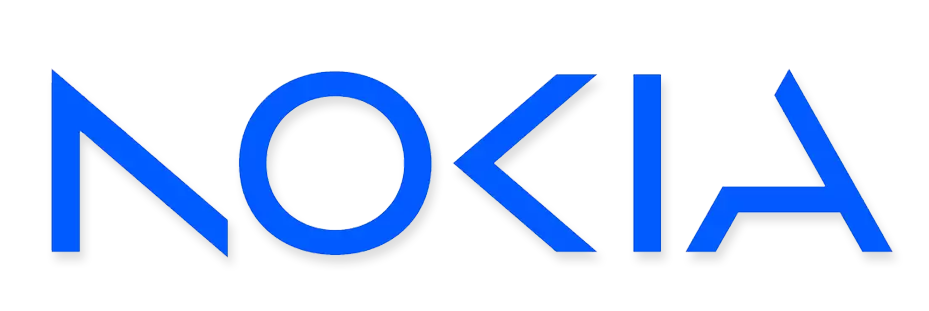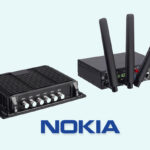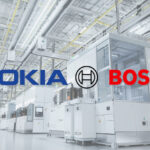ASIA ELECTRONICS INDUSTRYYOUR WINDOW TO SMART MANUFACTURING
Nokia’s Industrial 5G Tools to Connect Plants, Workers
Nokia has launched an array of industrial 5G devices to keep enterprise teams and public safety workers safe, connected, and informed over private wireless networks. Particularly, the company is introducing new ruggedized 5G handhelds and a new industrial device consumption model. In addition, it is also giving enhancements to worker- and device-related applications.
By adding these new assets to Nokia’s end-to-end platform for industrial digitalization, along with its private wireless and edge applications, the company reinforces its industry leadership with a market-leading portfolio. Moreover, it also strengthens its commitment to helping industrial enterprises navigate their digital transformation journeys to ensure safer, more productive, and more efficient operations.
Ensures Reliable Communication
The new Nokia Industrial devices are suitable for all types of enterprises and include a ruggedized handheld supporting public safety teams communicating over Band 68. The US-manufactured handheld device has a long lifecycle. Furthermore, it comes with an IP 68-rated for operation in remote or harsh environments. Dual-SIM, including flexibility adding eSIM, ensures the most reliable connectivity and simplified management, while an exchangeable battery allows shift workers to share devices in the field. Teams can customize keys to define a dedicated push-to-talk button, while other large buttons and optional accessories. These include remote speaker microphones and earpieces enabling push-to-talk. Thus, allowing workers to communicate clearly and safely without removing safety equipment like helmets and gloves.

Moreover, Nokia is also expanding its portfolio of ruggedized 5G handhelds with EX-rated phones – all with the same technical platform. The company has partnered with i.safe MOBILE GmbH, a world market leader for explosion-proof mobile devices and solutions. Also, it has two i.safe MOBILE 5G handhelds as part of the Nokia end-to-end solution for private wireless infrastructures.
They have been rigorously tested and certified* to meet the connectivity demands of sectors such as oil and gas, mining and chemical manufacturers. They can be safely used in hazardous areas (ATEX Zone 1) or further away (ATEX Zone 2) where a flammable atmosphere is not likely but could occur for a short time. Finally, these handhelds offered by Nokia, support all necessary radio frequency bands, have all required certifications. Thus, can be used by companies worldwide.*
Maximizes Assets, Capital
Nokia will also offer its managed ruggedized 5G industrial devices deployed over Nokia Digital Automation Cloud (DAC) in a subscription-based ‘as-a-Service’ (aaS) model. Application bundles include Nokia Industrial device management, which allows administrators to apply group policies and scale management to their entire device fleet, Nokia Team Comms, and Nokia Network Digital Twin. Hence, this model allows enterprises to move asset costs from capital to operating expenses and more easily connect workers. At the same time, manage the fleet of industrial devices in their plants. Moving forward, Nokia will continue to add more types of devices to the managed aaS model.
The updated Nokia Team Comms (NTC) 23 application running on Nokia Mission Critical Industrial Edge (MXIE) now aligns to the 3GPP defined MCS (Mission Critical Services) standard. NTC will address the needs of mission-critical push-to-talk (MCPTT), providing communication capabilities usually only available in more complex and expensive solutions for workers in harsh environments. Moreover, NTC allows users to stream video or establish voice calls with a group of users or a single user to gain the greatest context about any situation.
In addition, the new version will allow administrators to configure changes to their device fleet via a newly built web portal. Deployed on MXIE residing on-premises, Nokia Team Comms ensures data remains within the teams that use it. It works without internet connectivity and scales from a small number of users to large groups.
Serves Growing Enterprise Needs
Nokia is also extending the capabilities of Nokia Network Digital Twin (NDT) to all Android devices, allowing coverage and performance data for Wi-Fi, private, and public cellular networks to be automatically collected in real time and processed on Nokia MXIE. Enterprises in dynamic environments, such as ports, factories, or mines, can see how changes in their operations impact network performance. Most importantly, use this insight to inform future network planning and use case decisions.
Martin Beltrop, Head of Industrial Devices, Enterprise Campus Edge Solutions, said: “By extending our portfolio with the new 5G handheld devices and making Nokia Team Comms 3GPP-aligned, we can serve the growing needs of enterprise workers in industrial and hazardous environments as well as public safety teams.”
Furthermore, Beltrop said by leveraging the new capabilities of Nokia Network Digital Twin, teams will have more information than ever before. For that reason, allowing them to make instant informed decisions to maintain efficiency and network reliability in their dynamically changing environments.
Note:
* *Devices have received the following certifications: ATEX (Europe), NEC500 (US), IECEx (global), UKEX (UK) and JNIOSH (Japan)


